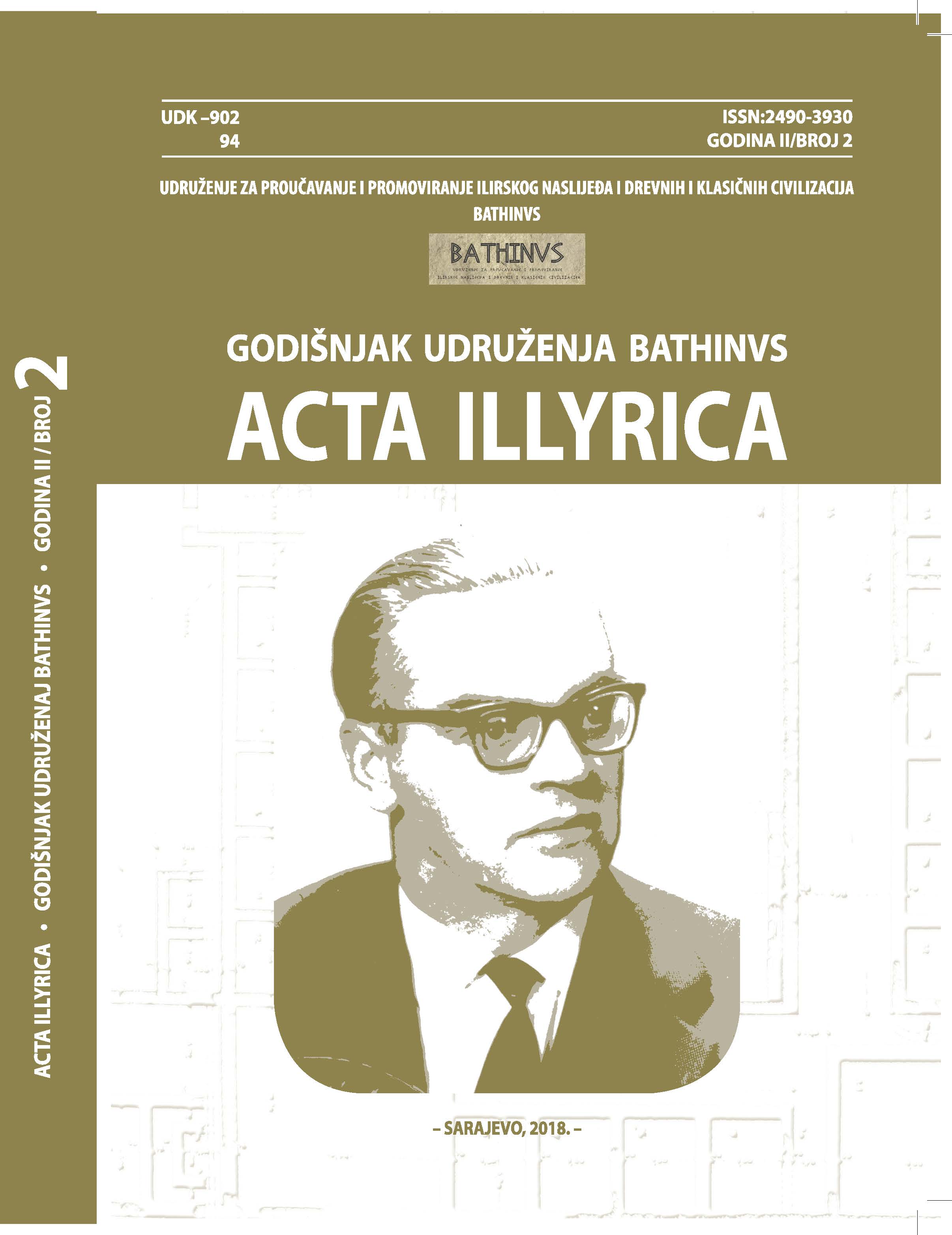Predstave ilirskih ethne u augusteumu u Afrodisiju
Personifications of Illyrian ethne from an Augusteum in Aphrodisias
Author(s): Salmedin MesihovićSubject(s): Archaeology, Cultural history, Ethnohistory, Political history, Ancient World
Published by: Udruženje za proučavanje i promoviranje ilirskog naslijeđa i drevnih i klasičnih civilizacija “BATHINVS”
Keywords: Aphrodisias;reliefs;Augustus;iconography;Illyrian peoples;
Summary/Abstract: The city of Aphrodisias (Aphrodisias; Ἀφροδισιάς) was situated in the continental inland of the Caria region in the south-west of Asia Minor. This town flourished in the Hellenistic period and the time of the Pergamon-Attalid dynasty that ruled Asia Minor from 282 to 133 BC. It was during this period that the city was named after the goddess Aphrodite (Venus in Roman religion) who had a very specific cult image in this city. Aphrodisias got its special symbolic meaning with the establishment of the Principate and the “first amongst the citizens”, Octavian Augustus, who was adopted into the gens Julia. One of the main propaganda elements of the new Augustan regime was a strong reliance on the “Aeneid story” that got its official version with Virgil’s Aeneid. Aeneas was the son of Trojan prince Anchises and Venus, whereas in Roman-Italic tradition, his son Ascanius/Iulus is considered to be an eponymous founder of the gens Julia. By advocating the “Aeneid story”, Augustus gave an emphasis to his divine origin, and Venus/Aphrodite became a deity of “special importance” for the new system.Aphrodisias was a city with many monumental facilities and buildings, statues and reliefs. The quality and amount of marble which the citizens and craftsmen in Aphrodisias had at their disposal resulted in a large number of inscriptions. Approximately 2000 epigraphic monuments have been discovered up to this point, the majority being from the Principate.Some of the monumental buildings of Aphrodisias are:1. The temple of Aphrodite, the focal point of the entire city, transformed into a Christian basilica in Late Antiquity2. Monumental tetrapylon3. Bouleuterion (βουλευτήριο) or odeon4. Stadium5. Augusteum (Sebasteion, Σεβαστείον on the Greek east) containing personified representations of Illyrian peoples and communities on reliefThe reliefs on Augusteum show the images of Augustus, Tiberius, Claudius and young Nero. The complex itself is dedicated to “To Aphrodite, the Divine Augusti and the People”. Originally it contained 190 reliefs. Iconography and reliefs can be organized into four groups divided into top and bottom lines of southern and northern temple portico:I. Southern portico: the top line contained the personification of principes and deities; the bottom line contained images of old Hellenic mythology.II. Northern portico: the top line contained allegories (and perhaps principes); the bottom line contained a series of ethne, i.e. the images of peoples.Each ethne was represented by a personified relief statue on a decorated base with an inscription. Relief statues were always in the form of a dressed standing girl. To this point, four statues and inscriptions have been identified for four peoples from the Illyrian territory: the Iapodes, Andizetes, Pirustae and Dardani. All four of these Illyrian peoples are mentioned by well-known and accessible source materials as the communities who were subdued by the armies commanded by Octavian Augustus after rebelling. A large number of sculptures or parts of the sculptures has not been ethnonymically identified with certainty due to damage and material fragmentation. Thus, we can assume that they hold hidden personifications or at least parts of personifications of other Illyrian peoples. The western part contained personifications of Illyrian peoples, and judging by their arrangement, peoples from the western Balkans may have been located somewhere in the vicinity.
Journal: Godišnjak Udruženja BATHINVS “Acta Illyrica”
- Issue Year: 2/2018
- Issue No: 2
- Page Range: 131-148
- Page Count: 18
- Language: Bosnian

